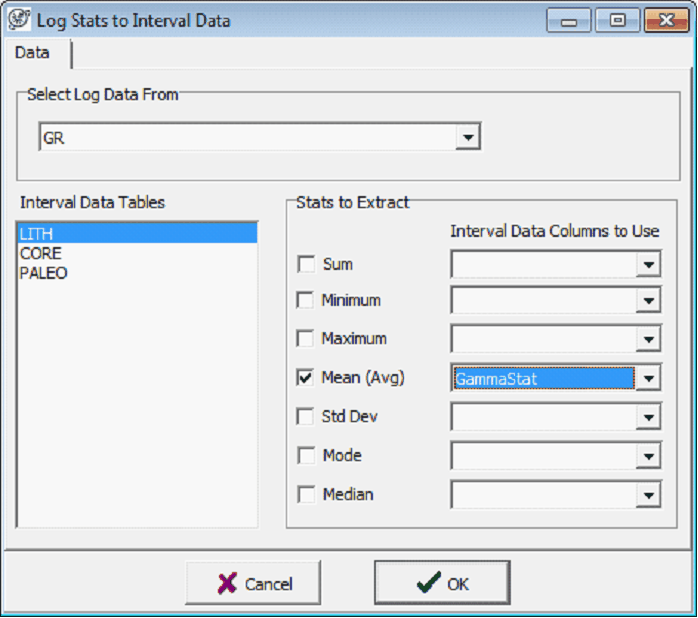Storing Log Curve Statistics to an Interval |
|
Its sometimes useful to extract numerical data from log curves to an interval. More specifically, this tool calculates statistics over a selected log curve between the top and base of each interval and stores the result as a interval data field. This statistical measurement is stored to a data field in a selected interval table. When stored as interval data, log curve statistics can be easily used in petrophysical calculations or compared with other interval data fields. To open the Log Stats To Interval Data tool, selectCompute>From Logs>Extract Log Stats to Int Data from the menu bar at the top of the Main Module
Select Log Data FromFirst, select the desired log curve from the dropdown menu at the top of the screen. In the example below, the GR curve is selected. Note that this tool will calculate log statistics on aliased curves, as well. Interval Data tablesNext, select the desired interval table from the Interval Data table on the lower left side of the screen. In the example below, the LITH table is selected, so the statistics measured will be stored in interval data fields in the LITH table Stats to ExtractFinally, select the desired statistics and the desired location. In the example below, a mean (or average) will be calculated for the GR log. The calculated average will be stored in a interval data field called GammaStat. Petra stores statistics out to 7 decimal places, even though the interval data field may only show fewer trailing decimals.
|
